How to Develop Logistics Software: Full-fledged Manual
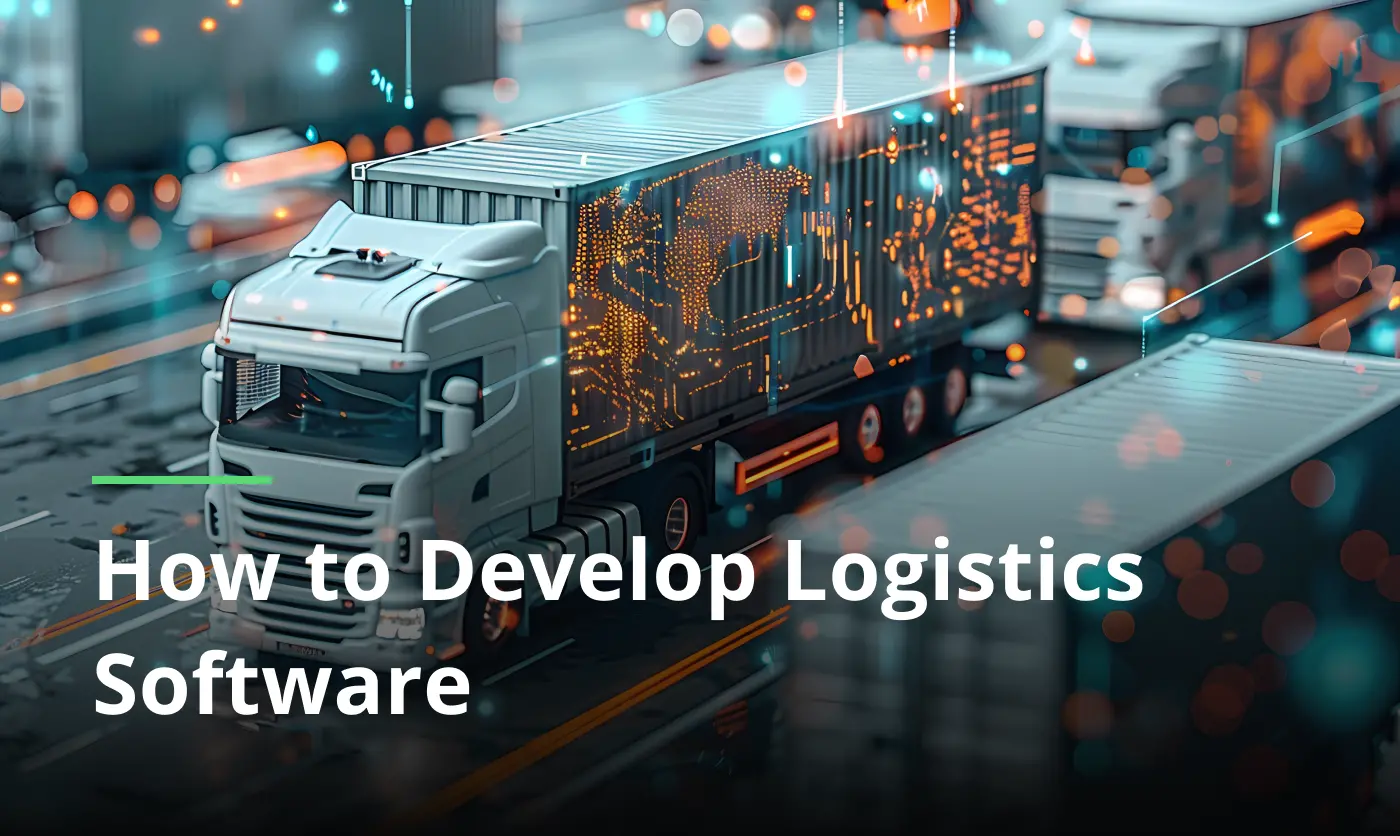
Logistics software development is a seismic shift for businesses aiming to fine-tune their supply chain functions. This course of action targets generating answers that boost efficiency, simplify workflows, and lower overhead expenses. Clear project synopsis of the project helps guide the development process, validating that the end result is suited to firm routines and poised for continued scalability.
While building logistics software for a particular company, it’s essential to get a handle on their unique requirements. Unique systems that work in harmony with existing technologies permit to supervise day-to-day tasks with ease. With a clear plan in place, organizations may guarantee their distribution management system keeps up with evolving challenges.
Transportation software development is equally important on the subject of managing and enhancing the movement of goods. Improving route optimization, vehicle coordination and live monitoring, this type of program enables logistics services to run with fewer disruptions and guarantees on-time deliveries — critical in today’s cut-throat market.
What is logistic software?
Freight control platform is here to help manage logistics processes, from cargo and warehousing to inventory control. This digital tool provides a practical solution for organizing the often chaotic process of goods shipping. No matter the size of your business, cargo coordination portal is essential to monitor your entire supply chain effectively and conserve trouble-free execution across all areas.
Custom logistics software development has the essential capability to simplify operations by making tedious tasks instantly automatic. A system exists that lets you check your vehicle positions and shipping locations while automated stock tracking and delivery prediction functions with up-to-the-minute information. The innovative technology provides tremendous value to delivery-focused firms which must maintain precise inventory documentation.
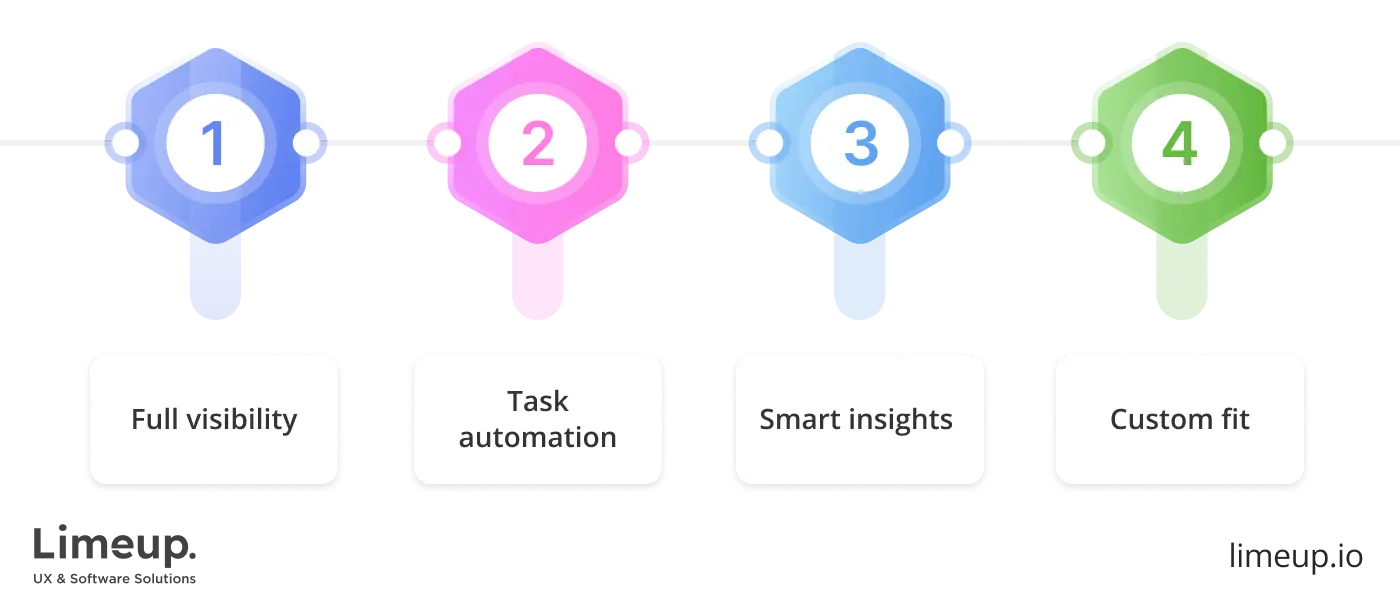
Rational potency stands out as one of the greatest advantages of using a delivery tracking app. Data collection from multiple sources allows managers to obtain necessary data which leads them to make prudent judgments regarding route planning transportation and potential inventory assets. If a shipment experiences difficulties the software will recommend different route options and substitute conveyance options for the timely dispatch of goods.
Logistics software enables configuration to make it suitable for various organizational requirements. Different industries have different requirements from supply flow app with fleet administration capabilities suitable for transportation agencies and stock control platforms geared toward shop owners.
Each organization possesses the autonomy to select software that allows for precise individualization, ensuring it is meticulously adapted to their strategic ambitions.
The market is packed with multiple smart logistics software providers which specialize in making solutions for both small and large enterprises. If you want to dive deeper, check out this resource, which talks about why having compatible logistics software developers by your side is the secret to your success.
In a nutshell, transport oversight platform is an absolute must-have for modern startups, helping them tackle the twists and turns of supply chain administration with ease. It boosts efficiency, cuts down on human error, and opens up more opportunities for growth.
What are the steps for logistics software development?
Creating cargo coordination app may be super exciting, but it’s also pretty detailed since it juggles technology and real-world demands. If you’re thinking about creating a distribution strategy for your company, let’s break down the main stages you’ll go through.
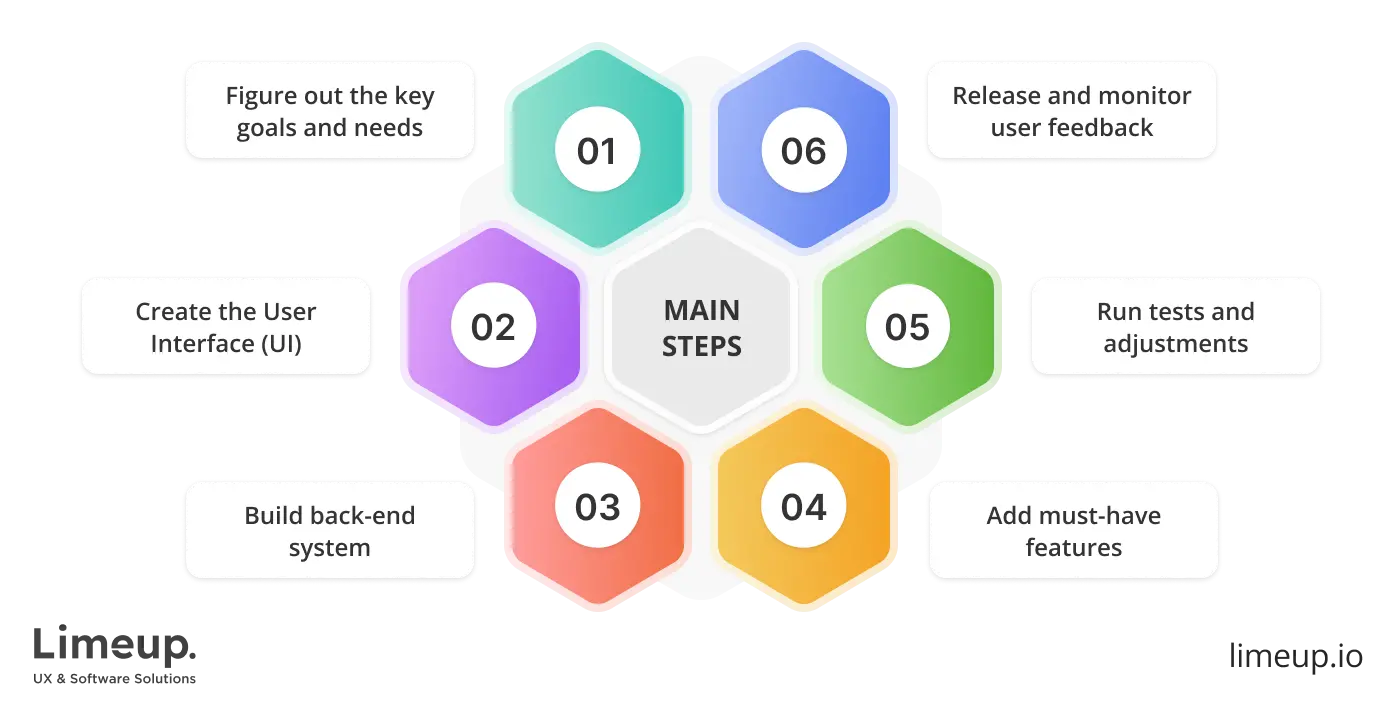
- Figure out the key goals and needs
The first step in any kind of custom software development for logistics is to nail down what problem you’re trying to solve. You’re dealing with issues like inventory handling, order tracking, fleet optimization, or getting a clearer picture of your supply chain.
Before jumping into the technical stuff, take a moment to chat with everyone involved, from warehouse managers and delivery drivers to your customers. It will give you the possibility to shape the core features of your needs, like instant tracking, reporting, route optimization or automated scheduling.
Fun fact: As Statista shows, the global logistics industry is expected to hit a huge $12.68 trillion by 2023, emphasizing just how important efficient solutions have become.
- Create the User Interface (UI)
Once you’ve got a handle on the logistic software development services goals, it’s time to think about the user experience. Every person who accesses the system necessitates a user interface facilitating flawless interaction: warehouse employees besides fleet supervision staff. The program needs a straightforward design system which allows consumers to obtain information without hitchhiking.
The delivery status monitor dashboard together with driver route-checking mobile app enhances both speed and performance when users interact with the software. The user interface design leads to easy reach and fluid movement through required options.
- Build back-end system
All magical functionality of the system occurs within the back-end section. Inside this system data processing occurs and it handles inventory administration as well as shipping record storage together with data analysis. Security measures operate within this location to safely protect sensitive information comprising client addresses together with payment details.
For solid back-end logistics management software development, you might want to hire software engineers who specialize in databases, APIs, and scalable infrastructures. The goal here is to create a backend that grows with your business and handles a large number of transactions harmoniously.
Interesting tidbit: A report from IBM reveals that 61% of transport companies consider improving supply chain visibility their top priority.
- Add must-have features
Now it’s time to start integrating the specific attributes that will make your software tick. Some of the major elements you should include in your software are: live tracking, route optimization, stock oversight, automated reporting and customer notifications.
You might also want to think about aspects like automated billing or integration with third-party systems like payment processors or ERP software. This is where your vision changes into a fully functional system.
- Run tests and adjustments
You really can’t skip quality assurance (QA) when you’re generating software, especially for logistics apps that need to be spot-on and trustworthy. Transportation and logistics software development company will test all sorts of stuff, like how users accept it, how it handles heavy loads, its security and how well it works overall.
Run numerous practical situations to validate its performance when dealing with demanding scenarios particularly during special periods such as holidays or complicated needs. State-of-the-art troubleshooting and maximized output systems must be implemented to guarantee uninterrupted function when the program is rolled out to users.
- Release and monitor user feedback
The transportation software launch day arrives after thorough testing, which leads to product refinement. Proceed with caution because this starts only one part of the development process. You must monitor the software’s performance because this ensures proper execution. Continuous feedback from users plays an essential role while version updates become necessary to maintain handling of new operational requirements.
What are must-have features to develop logistics software?
Cargo software has progressed from its beginning stage as tracking systems to become advanced systems that manage entire supply chain operations effortlessly. Businesses that execute thousands of shipments every day depend on suitable software components as they change shipping dynamics.

- Instantaneous monitoring and visibility.
The current standards of client service require precise tracking of each delivery’s position at all times. According to Convey’s study shopping customers expect in-the-moment package tracking because 98% of them want this capability. Firms may achieve better fleet monitoring by tracking locations through GPS and obtaining faster delivery estimates as well as quick responses to unforeseen events.
- Automated route planning.
The combination of efficient routes determines the total expenses for fuel and delivery time. Clever route planning can slash travel time by up to 20%, as highlighted by the American Transportation Research Institute. By keeping an eye on traffic trends, weather conditions, and delivery timelines, custom logistics software development services are able to steer you toward the best paths, saving both time and money.
- Warehouse and inventory management.
Excessive inventory levels and stock-level shortages create substantial damage to any enterprise dealings. An adequate system functions to monitor stock levels and demand forecasting as it helps avoid selling out of stock. Barcodes accompanied by RFID tracking and automatic reordering notifications assist organizations to evade warehouse inefficiencies which results in efficient operation.
- Incorporated communication tools.
Defective communication methods will stop shipping operations entirely. The app links drivers and dispatchers and warehouse staff with chat features combined with automatic alerts so everyone stays informed. Speedy updates about delays, schedule modifications, special instructions enable workers to avoid mistakes while they work more efficiently.
- Data analytics and reporting.
Enterprise decisions require appropriate data as their foundation. Through its workflows, the system made by a transportation software development company generates valuable data about fuel consumption, delivery durations, user endorsement ratings together with information about fleet performance.
Data-driven businesses are 23 times more likely to outperform their competition in client acquisition, almost 19 times more likely to remain profitable, and nearly 7 times more likely to retain consumers, according to McKinsey.
- Elasticity and modification.
With evolution, agency’s software needs to rise with them. A small startup with just a few trucks today might find itself needing a full-on system for an entire fleet in just a few years. With changeable attributes, the ability to add upgrades as needed and the flexibility of cloud-based solutions, logistics software is able to adapt to meet whatever new challenges come their way.
Prices of services for transportation software development
You know, costs may really differ based on a lot of factors, like how complex your project is and what components you want. As you produce a fleet management system, optimize routes or create a tracking platform, comprehending the pricing framework is indispensable for sound planning. A closer look at the factors influencing costs is a good place to start, so Limeup’s mind compiled a brief overview concerning prices.
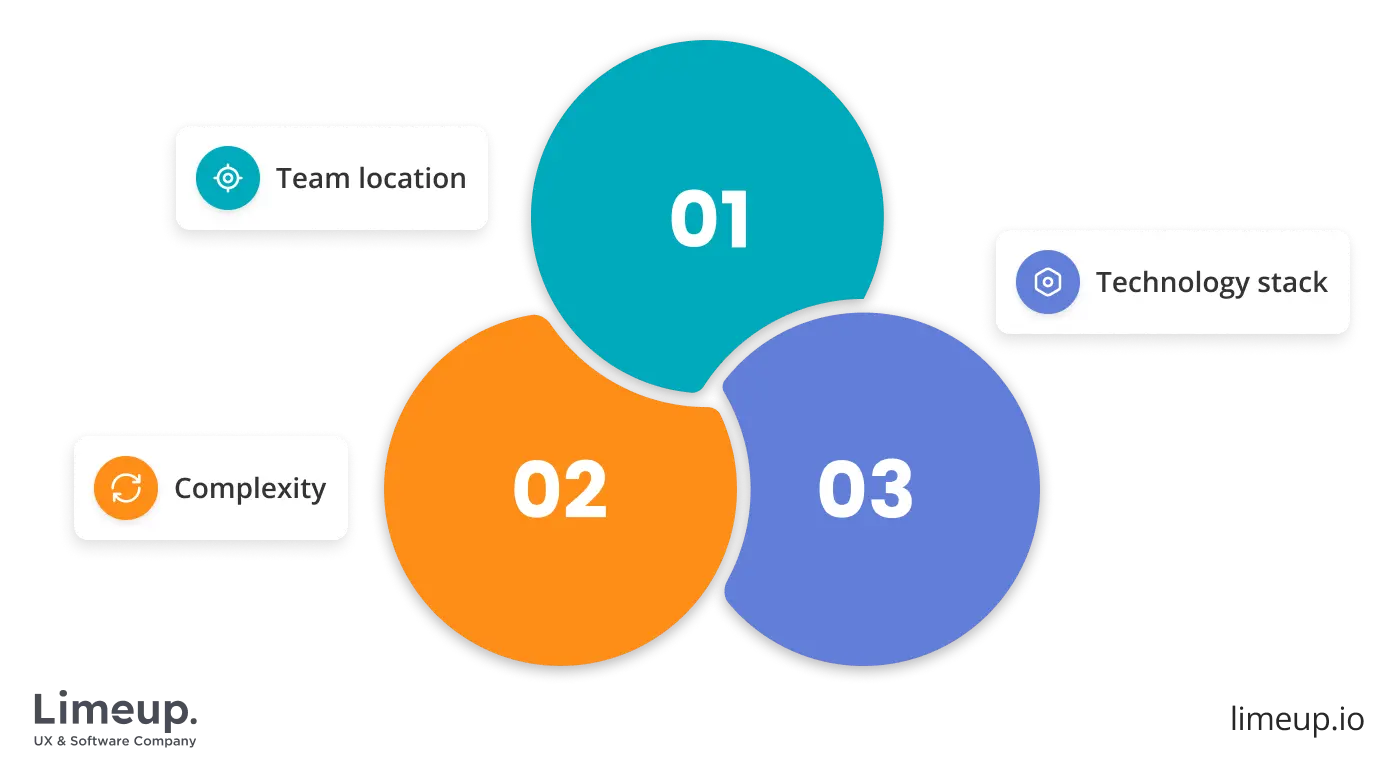
There are a bunch of things that determine the final cost of transportation software development services. Your decision for expenses requires assessment of necessary elements with technology resources and geographical position of coders and required delivery days.
- Complexity. The prices of fleet tracking systems decrease based on the number of tracking functions and whether they require analysis software alongside third-party service connections. Creating a vehicle coordination application with GPS tracking and live data surveying may incur considerable expenses between $20,000-$50,000 before reaching a price exceeding $100,000 when developing advanced features.
- Technology stack. The total expenses for your project will be influenced by the programming languages plus frameworks and tools you select. The usage of cutting-edge technologies including machine learning for order routing optimization and blockchain for secure transactions will raise project expenses because skilled specialists are necessary.
- Team location. Your company will need to spend higher fees when you employ software engineers who work out of North America or Western Europe but crews based in Eastern Europe or Asia are typically less expensive. To give you an idea, if you hire software developers in the U.S. it will cost you between $100 and $200 an hour, while those in Eastern Europe might charge $50 to $100.
Moreover, there are all sorts of logistics software development services, each with its own cost, depending on what they do. Let’s break down a few common types:
- Fleet management systems. These platforms aid in managing their vehicle networks, tracking where vehicles are, scheduling maintenance, and consumption rate. The early-stage expenditures for a basic system start at $20,000 but go higher to $100,000 or more depending on aspects requiring driver analytics tracking along with automated maintenance.
- Route optimization tools. Delivery trucks receive their fastest routes combined with the lowest fares from algorithms functioning inside these systems. Fleet management tools spanning from $10,000 to $30,000 need weighty price hikes to $50,000–$70,000 or higher when equipped with constant traffic data, weather updates and artificial intelligence predictive analytics tools.
- Tracking and monitoring systems. Current supervision popularity drives these platforms to let businesses track their transport shipments throughout transit periods. The expenses for these systems rest between $15,000-$40,000 because GPS adoption and notification functions and reporting features determine the ultimate cost.
- Comprehensive transportation platforms. Fleet oversight systems combined with route planning tools, tracking functions, along reporting and analysis will require a much higher investment. You might be looking at anywhere from $50,000 to over $200,000 for a well-built platform that covers large-scale carriage needs.
The next table shows a transparent view of the hidden costs that can arise during transportation and logistics software development.
| Hidden expenditure | Description | Approximate price |
| Persistent support and revisions | Includes bug fixes, security patches and tools upgrades. Typically, 15-20% of the initial building cost annually. | 15-20% of preliminary expenses per year |
| API integration charges | Outlays for integrating existing technology with third-party APIs, including payment gateways, GPS, and inventory systems. | $10,000–$30,000, depending on the intricacy involved |
| Expandability | Upfront costs to build software that adapts as the entity grows. Although this may raise first-phase spending, it prevents the need for expensive redesigns later on. | Higher opening budget (varies by platform) |
Be sure to share your needs openly with your transportation software developers from the get-go and keep your expectations in check when it comes to what you can financially manage. Focus on the elements that really matter first, and think about adding more cool stuff later on.
This way, you can build a solid foundation without breaking the bank. Also, don’t forget to account for ongoing costs that come with updates, customer support and maintaining your infrastructure.
Pouring resources into transportation software proves to be a smart strategy that brings meaningful advantages. It enhances workflow efficiency, lowers overhead costs, and ensures happier clients. With a solid cognizance of the costs involved and the qualified collective engaged, you are able to build tools that keep transit activities running like clockwork and save valuable resources along the way.
How to select a logistics software development company?
Evaluating developer approaches to address logistics challenges requires both a strategic mindset and a decision-driven process, given the vast number of engineers offering innovative options.
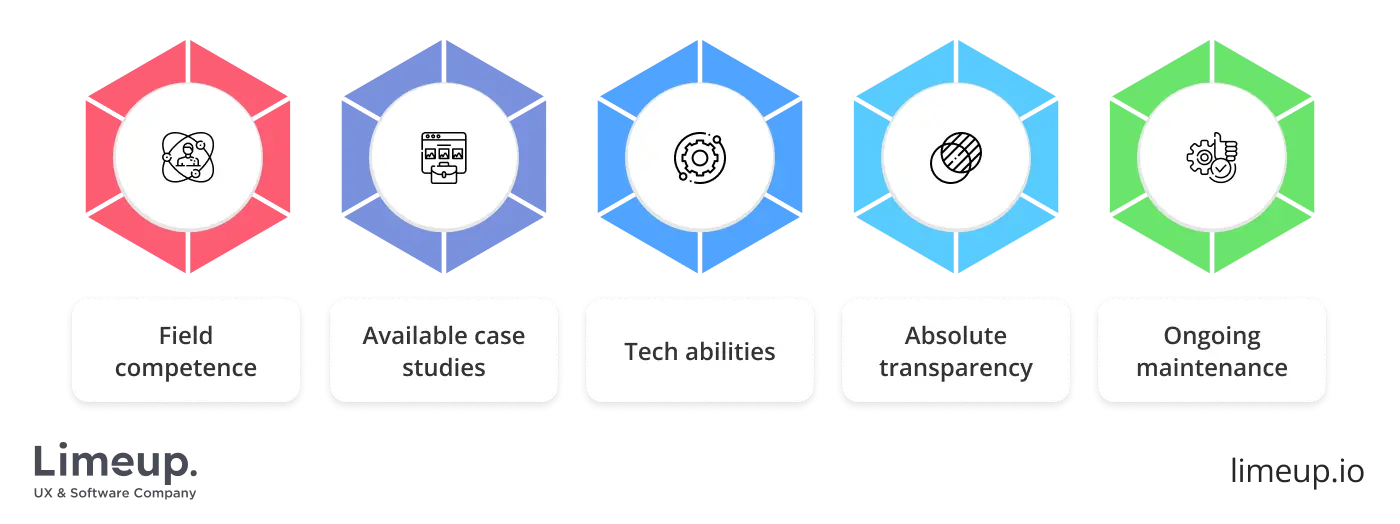
Your search for a logistics and transportation software development ally has to begin by finding firms with actual competence in the field. You’re in need of tech gurus who deeply understand transportation, supply chain administration, warehouse systems, etc. Request info about case studies with client testimonials for evaluating their track record. Relationships with logistics software development companies similar to yours make them perceive your criteria effectively.
Moving ahead examine how advanced their technological abilities are. A reliable software engineering vendor has to stay updated with emerging technologies especially artificial intelligence and machine learning and cloud computing. Your performance increases substantially through these tools which provide features such as instant data observation, predictive analytics, smart reasoning mechanisms.
The globe’s automating logistics market was valued at $73.47 billion in 2024 and is anticipated to reach USD 238.99 billion by 2034, with an annualized growth rate (CAGR) of 12.52% from 2026 to 2034.
Finally, communication is of huge importance. The organization must maintain absolute transparency throughout the entire project duration. The company needs readiness to explore your requirements and share persistent updates and accept input from you.
The partnership exists beyond the start of initial transportation management software development so remember that it will continue between both parties. Platform building depends heavily on maintenance programs and upkeep since these functions enable app to stay consistent with market penetration. Experienced teams convert what started as a necessary requirement into a tool that provides distinct perks through their work.
In summary
Producers that select custom-designed fleet control tool will build superior positions that strengthen supply chain flow and generate savings and service improvements. Seeing the wisdom in avoiding the misguided use of good fortune is exactly how investing in suitable software leads to future business victories in the field of transporting.
The logistic software development path demands professional experience and new ideas and requires a detailed strategy. From what we’ve observed, a properly designed product will handle present requirements as well as aid enterprises in uncovering upcoming opportunities.
A sturdy logistics platform functions as the core strategy that companies need to keep their workflows competitive. Consult Limeup for next-level technology resolutions that will enable flawless procedures and construct a smarter supply chain.

